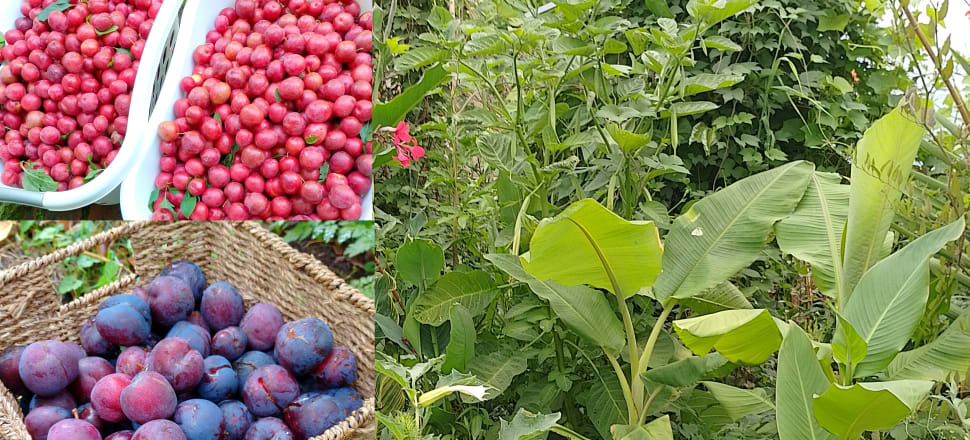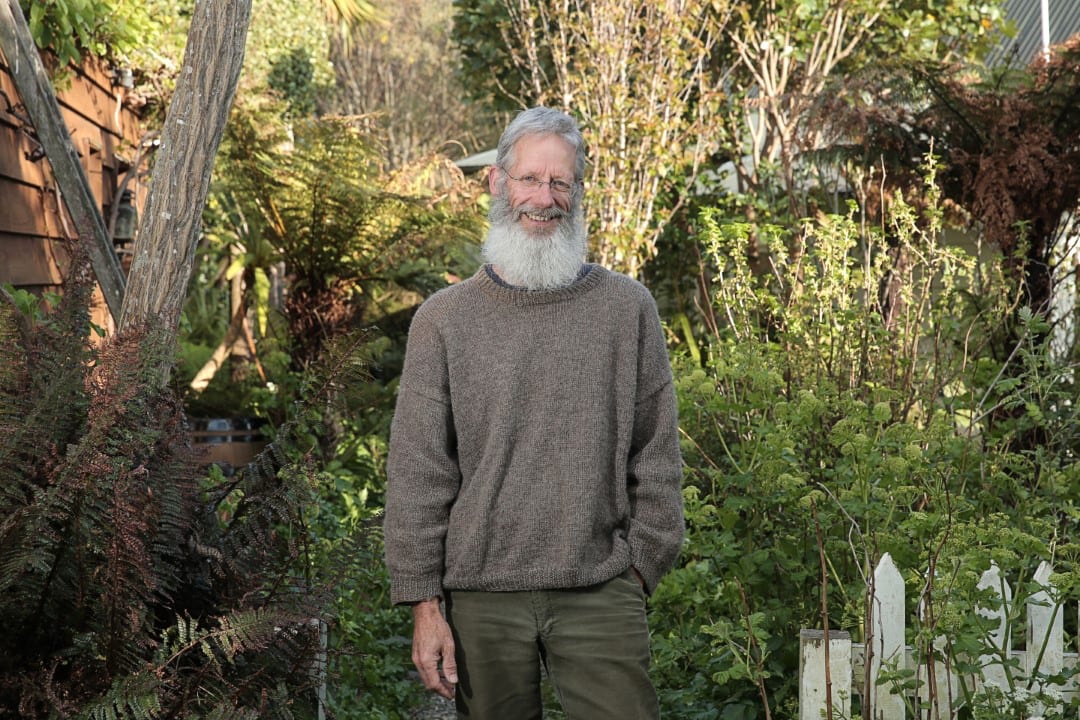
As the north of the country gets pummelled by the weather subtropical fruit trees and plants once marginal in Southland soils are thriving thanks to balmier conditions
“We are having an absolute boomer of a fruiting season down here,” says food forest expert Robert Guyton.
Down here is Riverton, a town 40km from Invercargill on Southland’s south coast.
Among the myriad species Guyton, originally from Nelson, is growing are bananas, cherimoya, passionfruit, persimmon and pomegranate, plants more commonly found in warmer climes.
Cherry guava are “fruiting prolifically” in his forest garden as well as passion berries that are more usually seen in tropical Africa than Southland.
Guyton grows four banana varieties, including five Cook Island plantain banana plants outside and that he expects to fruit next year.
He has planted one banana by the roadside because he thought it would be an eye-opener for passing traffic to see tropical fruit growing outdoors in Southland.
Guyton grows various South American climbers that are also thriving, some of which produce edible pea pods or tubers.
But it’s not just his subtropical plants that are abundant this summer.
It’s a “phenomenal season” for growing pears, apples, apricots, nashis, quinces and plums, says Guyton.
“Our apple crop is so heavy that I am propping up branches because of the weight of the fruit.”

Among his recent daily harvests are “laundry baskets full of different varieties of plums”.
Guyton posts about his harvests and growing successes on Facebook and growers from throughout New Zealand comment on his page.
Climate envy
Growers in the Far North and Auckland have been posting about the “disastrous season” they’ve been having and about crop failures from endless rain, says Guyton.
“They are reporting blossom end rot in tomatoes and brown rot in peaches and plums or about the failure of those crops to get pollinated because of poor conditions during the flowering season.”
It's a stark contrast to what is happening with fruit crops in Southland, he says.
North Island growers have also been grappling with guava moth incursions.
“I believe it is happening because of warming temperatures and the more tropical conditions they are getting up there.
“This moth has come to New Zealand and is devastating fruit crops. It’s not just guava - they eat everything,” says Guyton.
Guyton and wife Robyn created their forest garden, the most established in the South Island, three decades ago. Over the years, the couple have transformed a once overgrown and neglected section into an edible paradise brimming with organic fruits and vegetables.
The couple’s garden sanctuary is a popular destination for tours and is also used as a classroom where Guyton, a former teacher, offers lessons in forest gardening and sustainable living for local high school students.
Guyton began growing plants in his parents’ Nelson garden as a child.
“When I came to Southland 35 years ago I found it difficult because everything grew more slowly and was subject to tougher conditions. But that has changed and now this feels like Nelson to me.”
In the past five years he has worked to increase his collection of subtropical plants by buying seedlings from or trading them with growers further north.
Data doesn’t lie
The four-term Environment Southland councillor has been preparing for the altered weather patterns brought on by climate change for years.
“Being a regional councillor I am often presented with graphs and diagrams and information by our science team and for a long time it has been obvious change is well under way here in terms of temperatures.”
Current data shows “very clearly” the frequency of severe frosts in Southland over the past 40 years has plummeted making it possible to grow plants that wouldn’t once have survived.
The weather and changing climate patterns may not be good news for all crops with Guyton predicting swedes, a Southland staple that likes cooler temperatures, might find “the new conditions uncomfortable”. He is warning growers to plant their crop early this season.
Greg Diack, owner of Diacks Nurseries in Invercargill, says demand for subtropical fruits trees and plants and other types of fruit rarely grown in Southland has increased.
People are increasingly trying to grow avocados, and whereas “30 years ago no one even thought about growing feijoas”, customer demand is rising year on year, he says.
This season, customers have grown watermelons in tunnel houses and outside in sunny spots and there is a greater demand for persimmon, tamarillo and pomegranate plants or trees.
Last year he sold about 30 banana plants for raising indoors. Southland remains marginal for fruiting bananas outdoors.
One of the more unusual fruits available at the nursery is cherimoya, or custard apple, a South American plant usually grown at high elevations in tropical areas.
Subtropical plants thrive in the micro climate of Southland’s south coast, but elsewhere growers need to be cautious to plant such trees as lemons where they get the moisture and temperatures they need.
Made with the support of the Public Interest Journalism Fund








